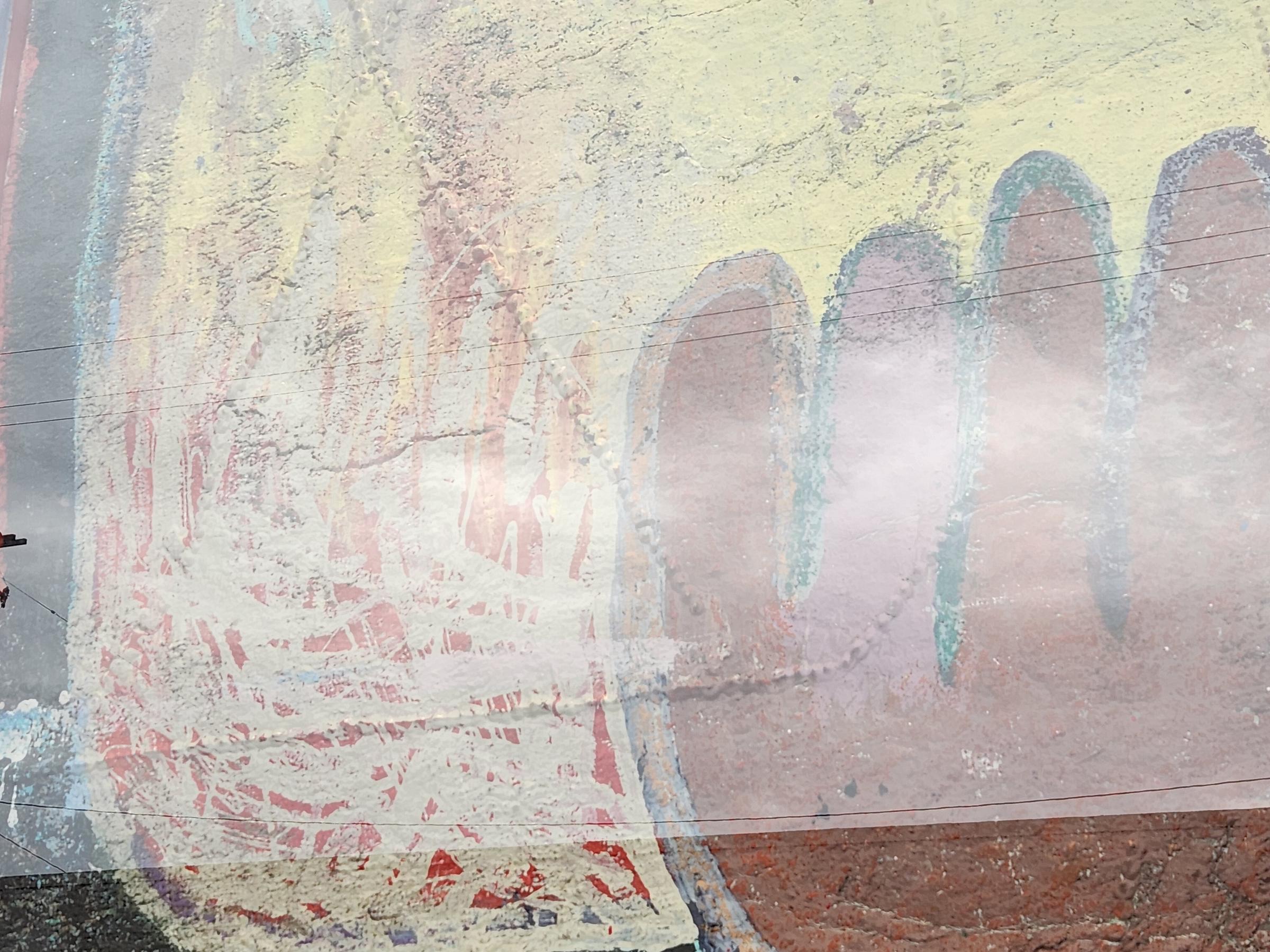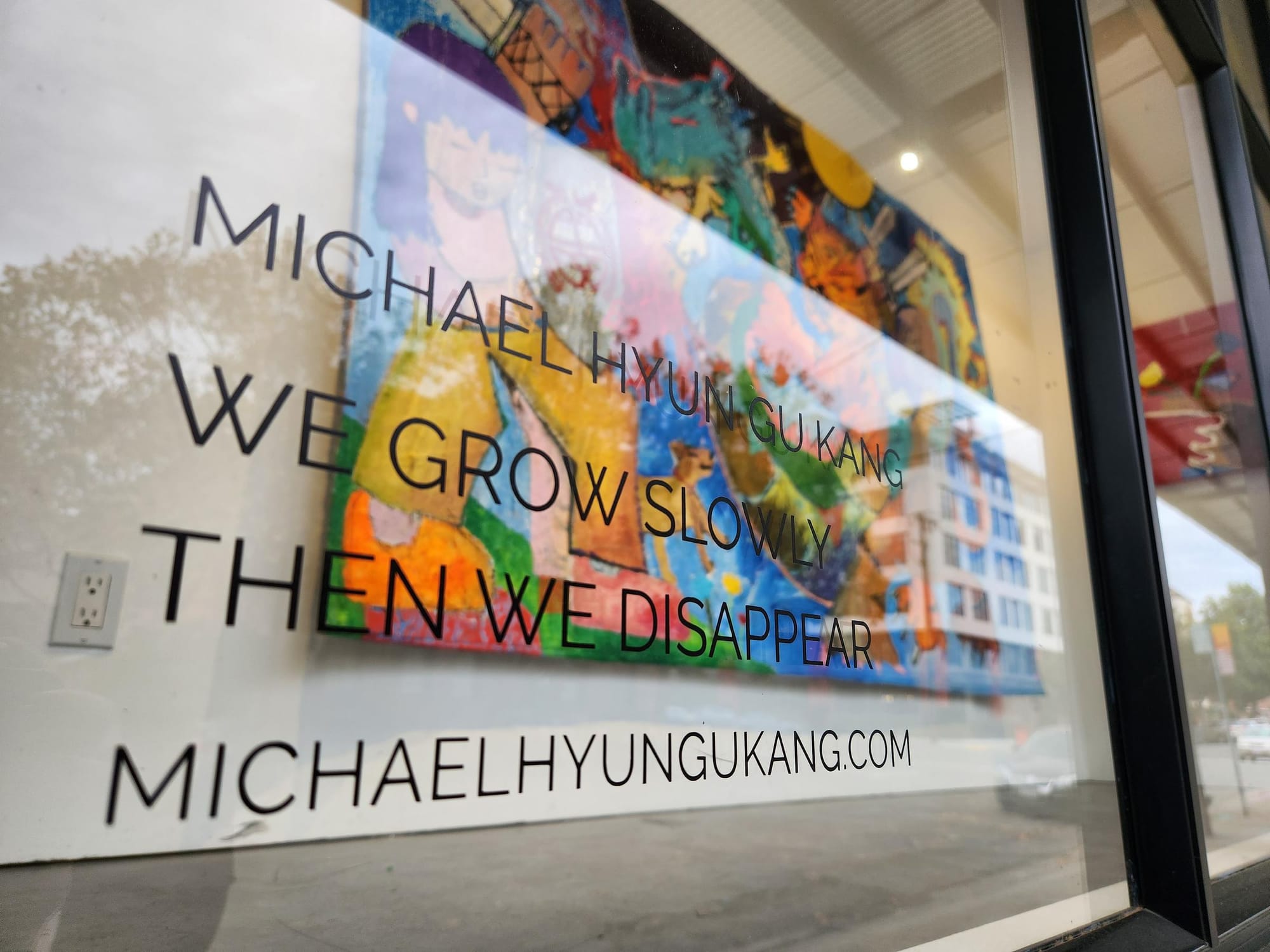We Grow Slowly Then We Disappear
Michael Hyun Gu Kang
The Roll Up Project
217 Harrison St., Oakland
Through Dec. 13
On an almost quiet corner of the Jack London District in Oakland, a feet away from an Amtrak station, a large window shines bright in the cold gray winter light. Signs abound warning against parking; at the center of the window hangs a large-scale painting, brightly colored, textured, and calling for attention.
The painting, Taming a Dragon, is one of three pieces by artist Michael Hyun Gu Kang on display at The Roll Up Project, a “display space for artists by artists.”
The project, founded in 2017 by Squeak Carnwath and Gary Knecht, aims to provide “a space to show art in a non-commercial and easily accessible setting,” and those goals have been met. The Harrison Street window is visible Monday-Friday from 10 – 5, while the third street one is open 24/7.
Having hung the work of other artists as well as my own (and including Kang, years ago), I was struck by how difficult the works were to actually see. Taming a Dragon, reminiscent to my friend of Guernica (I saw why, did not agree), was well lit and centered in a large and inviting window, but the panes and reflections split it in ways I could not ignore or fully move past. Get too close to the window and it becomes distorted, move back to take it in and it becomes obscured.
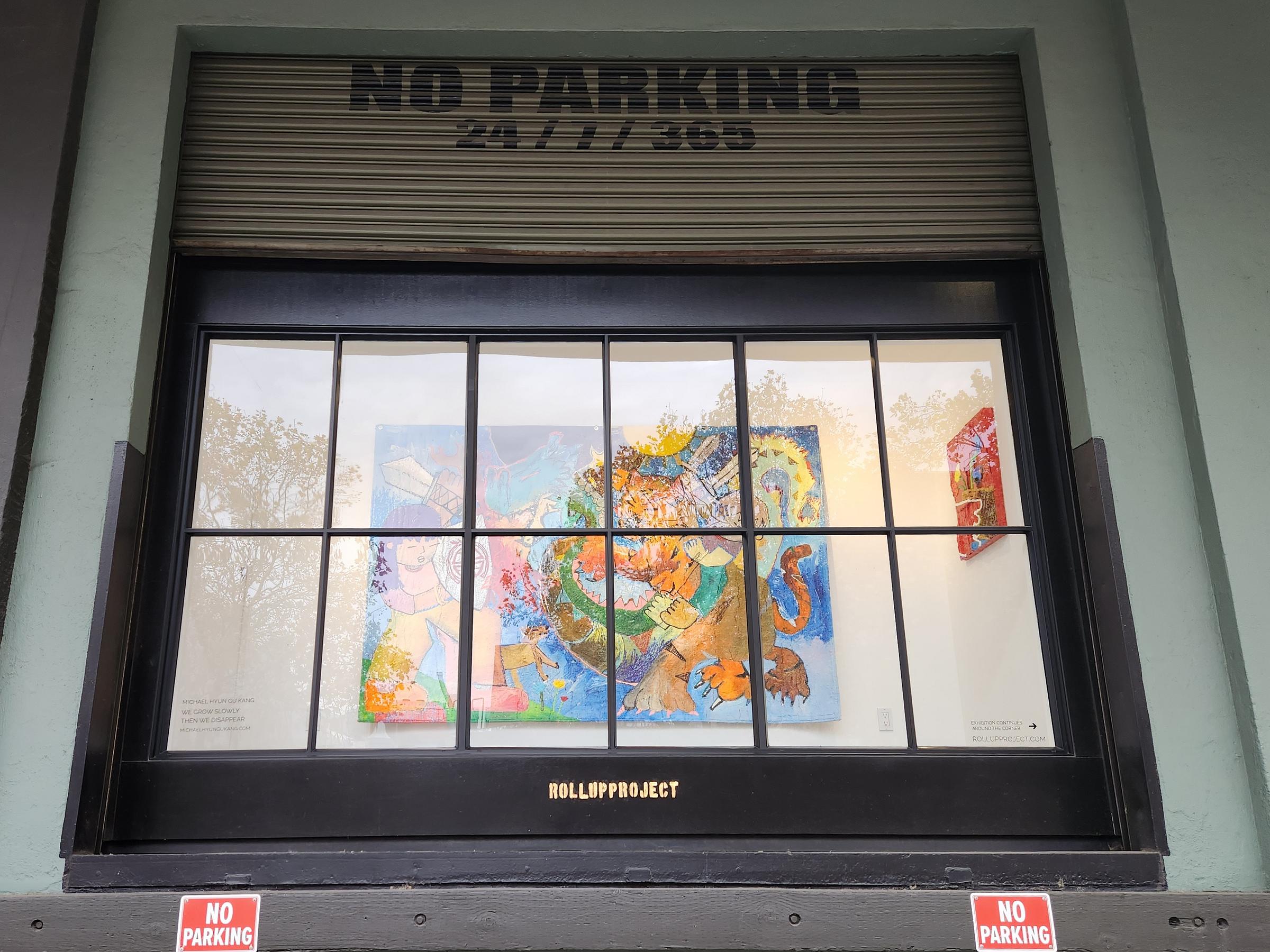
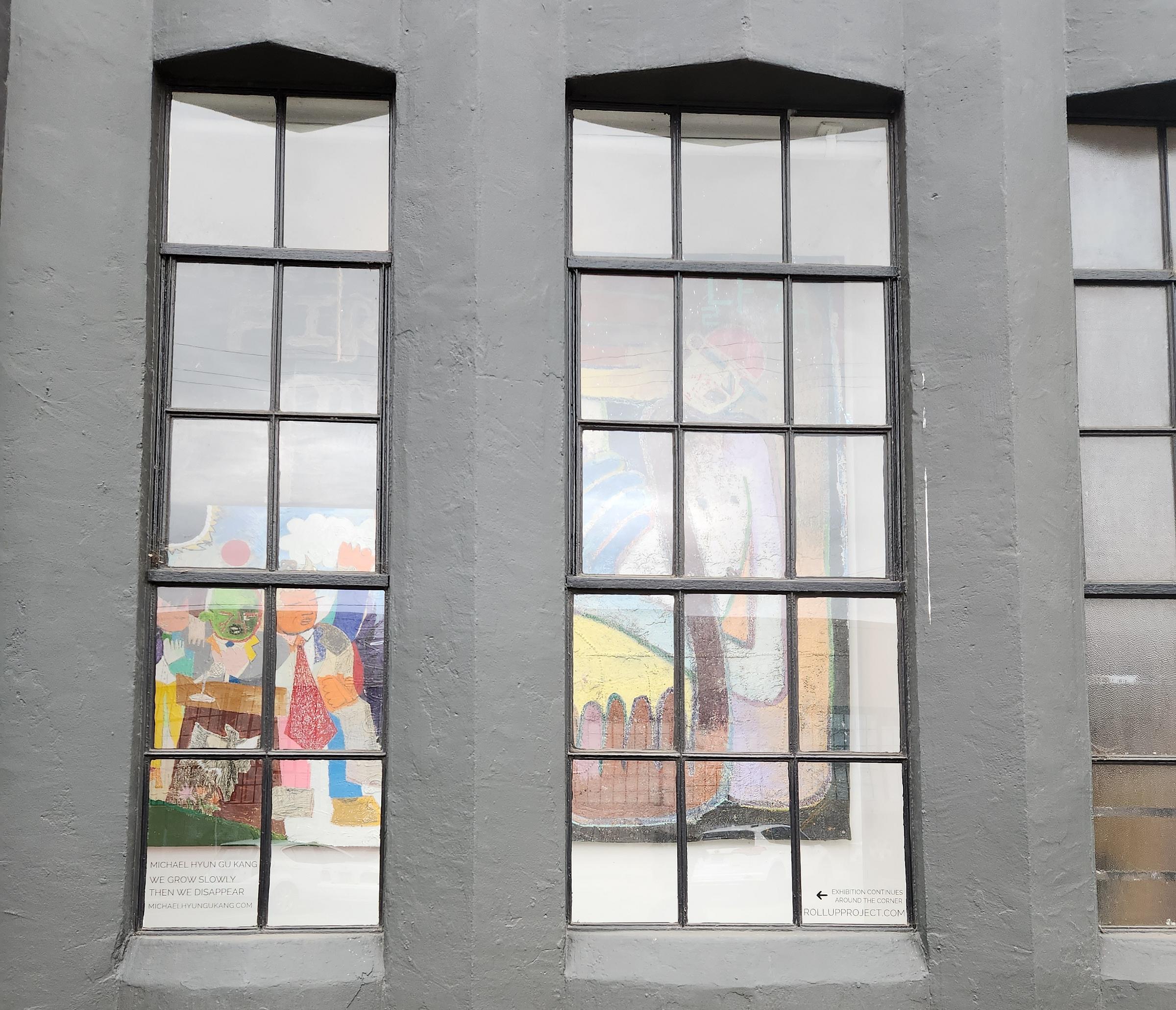
On 3rd Street, three works bled together. That was intentional, I later learned after on Roll Up’s website, their various coloring and styles merging into what I had assumed was one mammoth piece.
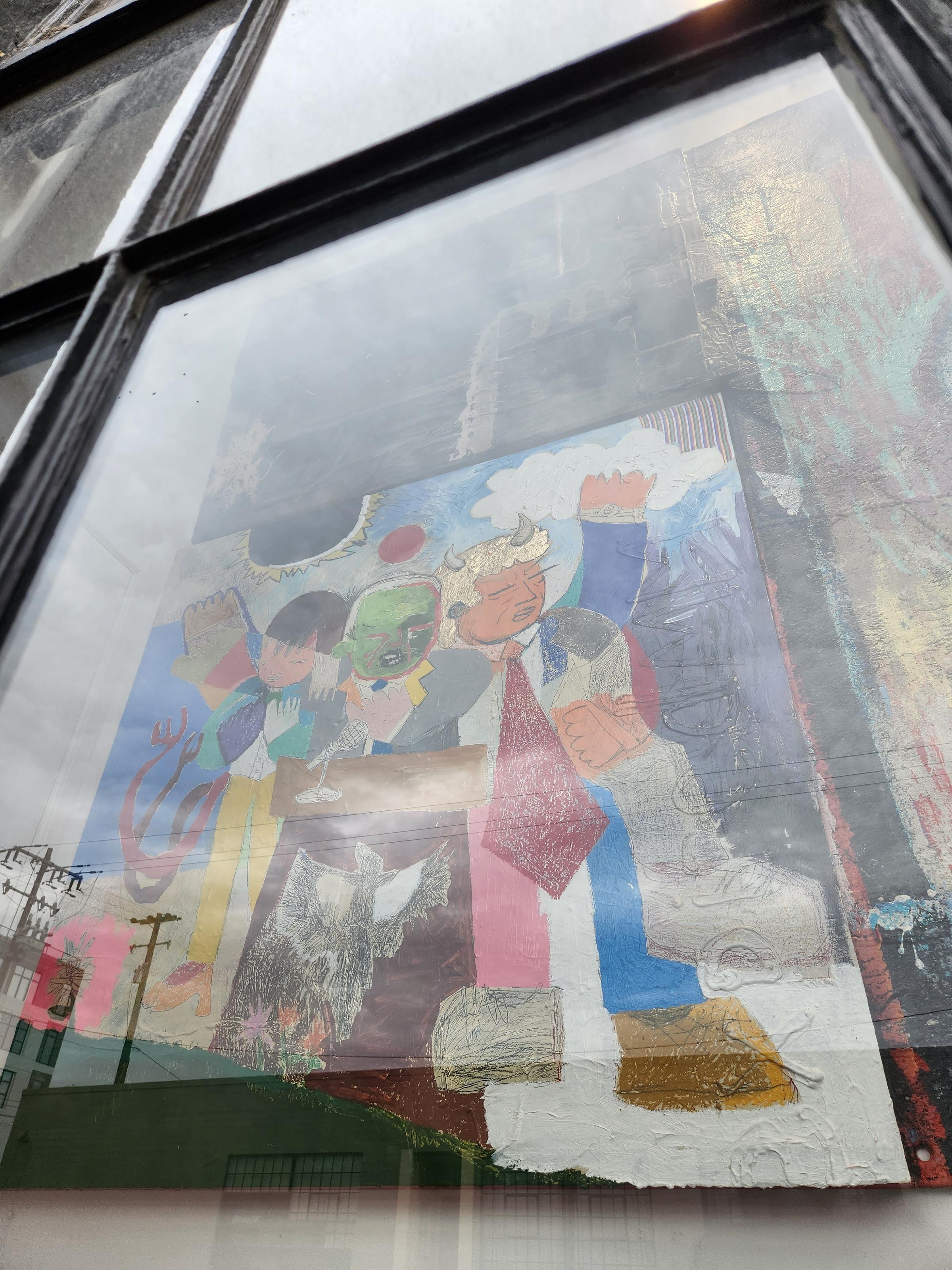
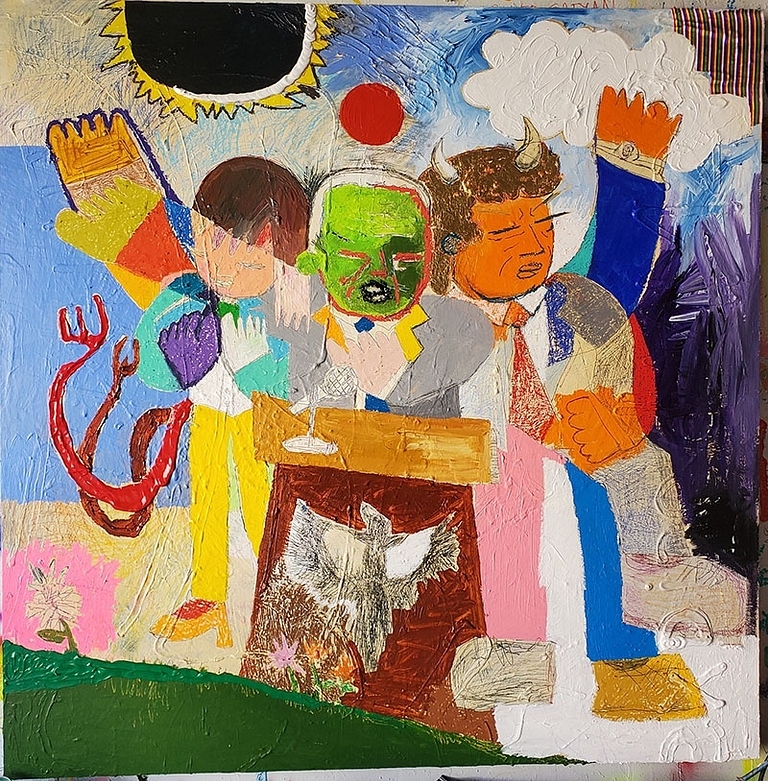
In We Are Your Friends, a Trumpian figure stands close with two others, devil tails to the side and eclipsed sun above.
Kang’s style of childish figures rendered with true artistic precision, too-many-colors layered with the intention of a haphazard feel, fabric, pastels, acrylic, oils, and gold leaf drawn together under a paint marker, bestowed meaning and feeling from a Korean American artist, and spit out.
I found it hard to concentrate on any of those three (Protest and Wings to its right) with the glare and grime of the windows coupled with the small panes breaking up the large works. The darkness of Protest made it difficult to read, much less appreciate. While I spent some minutes trying to figure out how the riveted look of many of the lines of Wings, the overall view was so obscured as to leave me frustrated rather than just perplexed. It is painted in acrylic, oil pastel, and colored pencil on a rug — a choice I found fascinating but completely lost in this space.
None of the pieces had individual titles or any explanation of the work or process, though both Kang and the Roll Up website offer plenty of insight. If the point of the gallery is to be accessible to all, I’m not sure that needing to do your own external research in order to understand the work counts. But I am grateful to have windows to linger by and spaces for artists to showcase outside of traditional galleries.
